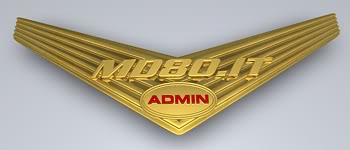Posto gli articoli:
http://www.smh.com.au/news/travel/qanta ... 46448.htmlQantas autopilot blamed for jet plunge
A COMPUTER malfunction involving Qantas Flight 72's autopilot system has emerged as the likely cause of the passenger jet's plunge that left 20 people seriously injured.
As Qantas disclosed yesterday that more passengers and crew had been injured than first thought when the Airbus A330 dropped from 37,000 feet on Tuesday, investigators said an "irregularity" in the jet's computer system occurred at the time.
The Australian Transport Safety Bureau safety investigations director, Julian Walsh, said QF72's pilots received electronic monitoring messages indicating there was a problem with the plane's elevator control system, the device that controls a plane's up-and-down movement.
Mr Walsh said that as the crew tried to act on the alerts, the aircraft climbed about 300 feet before "abruptly" pitching nose-down, sending passengers - particularly at the rear - slamming into the cabin's roof and walls.
"There was a period of time where the aircraft performed of its own accord," Mr Walsh said.
Qantas management has refused to comment on the cause of the incident, but a source within the airline told the Herald the plane's autopilot system was to blame.
The Australian and International Pilots Association president, Captain Ian Woods, said that, based on investigator's statements, a problem auto-flight control was "a likely explanation".
"When an auto-flight system exceeds its authority - goes beyond what it is designed to do - it sends a message to the pilots. The pilots acted exactly as they should have done in that situation."
Qantas and Airbus did not respond yesterday when asked who had responsibility for installing and maintaining the A330's flight control systems.
Mr Walsh said he was confident the flight data record - contained in the aircraft's instrument and cockpit voice recorders that were removed yesterday - would provide clearer answers.
News of the apparent computer malfunction came as Qantas revealed that 74 of the flight's 303 passengers and 10 crew were hurt in the fall - with 14 considered serious, 30 requiring hospital treatment and a further 30 treated for minor injuries.
A spokesman for Perth's Sir Charles Gairdner Hospital said two passengers remained in hospital yesterday.
Doctors said it was too early to determine the severity of the spinal injuries suffered by some of the passengers.
Jim Ford, of Perth, said he thought he was about to die as he watched people being thrown around the cabin.
"It was horrendous, absolutely gruesome, terrible, the worst experience of my life," he said.
Ben Cave, also of Perth, said for a few seconds he had feared for his life.
"We had a major fall and another fall shortly after. I hit the ceiling but I was OK; I only got a few bruises and strains. I just remember seeing that the plane was a mess."
http://www.news.com.au/heraldsun/story/ ... 62,00.htmlQantas warned of flaws in plane's computer
QANTAS was repeatedly warned about potential problems with elevation systems on an aircraft that plunged out of control, injuring 74 people.
Herald Sun can reveal Qantas and other airlines were warned in July 2004 and again in August last year about the potential for a serious malfunction aboard the A330-300 series aircraft.
The Civil Aviation Safety Authority warned of potential problems with elevation controls, including concerns about potential break-down of hydraulic "O-ring" seals.
Airlines were told to do maintenance and pre-flight checks because of the problem, which could result in "elevator control loss" -- the issue at the centre of Tuesday's scare.
The hydraulic O-ring problems were also raised in January 2007, when European regulators warned they could cause a critical incident if the valve seals broke, which could, "in the extreme case, reduce the controllability of the aircraft, which is potentially critical".
Qualcuno potrebbe spiegare meglio il significato di questi articoli? Cosa sono gli elevators? E poi parlano di sistema idraulico, o-rings, allora il problema è meccanico o di software?






